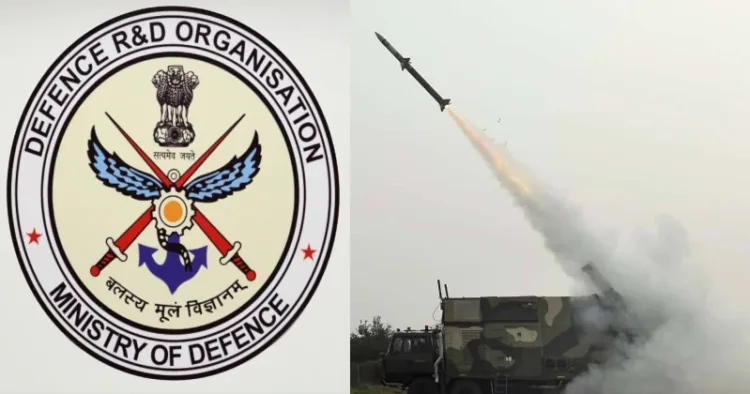The Defence Research and Development Organisation (DRDO) is preparing for a significant long-range missile test, scheduled to take place between September 25 and 30, to coincide with the 10th anniversary of the “Make in India” initiative. A Notice to Airmen (NOTAM) has been issued, signaling the potential launch of a strategic missile, with a test zone stretching over 1,700 kilometers, suggesting the involvement of a powerful, long-range missile system.
The upcoming missile test is part of a broader series of tests DRDO has planned for September and October, aiming to bolster India’s missile arsenal. India Today previously reported that DRDO had already planned multiple missile tests during this period, and this upcoming test aligns with those projections. In the last month alone, DRDO successfully tested three advanced missile systems, showcasing India’s growing offensive and defensive capabilities.
According to a senior official familiar with the developments, “This NOTAM points to a highly strategic, long-range missile designed to bolster deterrence. DRDO has ramped up its missile testing program as part of a broader effort to strengthen India’s defense posture.”
India has made significant progress in the development of long-range ballistic and cruise missiles over the years, solidifying its position as a formidable regional power. The Agni-IV intermediate-range ballistic missile is a prime example of this advancement, capable of carrying both nuclear and conventional warheads over distances of up to 4,000 kilometers. This capability allows India to strike deep into adversary territories, including China and Pakistan, thus strengthening its nuclear deterrence.
The recent series of tests, including the expected long-range missile test, underscores India’s commitment to modernising its missile systems and addressing both present and future security challenges. A source revealed that “Several missile tests are lined up in the coming weeks, involving variants tailored for different strategic roles. These tests are part of a larger plan to modernise our arsenal.”
Technological Advancements in Missile Systems
India’s missile program has seen continuous improvements in missile design and technology. The Agni-IV missile, for example, features enhanced guidance systems, upgraded motors, and advanced thrust vector control systems, ensuring accurate and reliable performance during flight. Its use of maraging steel and carbon fiber improves the missile’s reliability by increasing its strength, thermal stability, and resistance to external factors such as weather conditions and missile defense systems.
The DRDO’s testing program also plays a crucial role in ensuring the operational readiness of these missile systems. Frequent testing allows for the validation of technological parameters and the correction of any glitches, which is essential for ensuring reliability during potential crisis situations. “Mere possession of nuclear delivery systems is not enough,” said an expert. “They need to be operationally prepared for quick response.”
The timing of this test, coinciding with the 10th anniversary of “Make in India,” carries both strategic and political significance. It emphasises India’s commitment to indigenous defense production and technological self-reliance. The advancements in missile technology also highlight the nation’s increasing capability to defend itself in an evolving security environment, particularly in a region where nuclear threats remain a reality.
India’s nuclear deterrence strategy is grounded in the principle of “credible minimum deterrence,” which focuses on the development of a qualitatively strong nuclear arsenal rather than a large one. The recent tests, including the expected long-range missile test, aim to enhance the survivability, reliability, and readiness of India’s nuclear forces. The Agni-IV missile, in particular, strengthens India’s ability to respond to both China and Pakistan in a crisis, given its road-mobile launch capabilities and long range.
The Agni-IV’s ability to carry both nuclear and conventional warheads complicates the strategic landscape, as adversaries may struggle to discern whether the missile is carrying a nuclear payload or a conventional one. This dual capability adds to the missile’s survivability during a crisis phase, especially when dispersed in various locations.
With India exposed to the possibility of a two-front conflict involving both China and Pakistan, long-range capabilities like those of the Agni-IV allow for greater strategic flexibility. In particular, India can launch nuclear strikes from any part of its territory, reducing the vulnerability of its arsenal and increasing the risk factor for adversaries contemplating first strikes.



















Comments